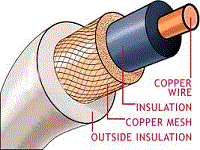Electro Chemical Action
If a load (a device that consumes electrical power) is connected externally to the electrodes of a cell, electrons will flow under the influence of a difference in potential across the electrodes from the CATHODE (negative electrode), through the external conductor to the ANODE (positive electrode).
A cell is a device in which chemical energy is converted to electrical energy.
(This process is called ELECTRO CHEMICAL ACTION ).
The voltage across the electrodes depends upon the materials from which the electrodes are made and the composition of the electrolyte.
The current that a cell delivers depends upon the resistance of the entire circuit, including that of the cell itself. The internal resistance of the cell depends upon the size ofthe electrodes, the distance between them in the electrolyte, and the resistance of the electrolyte.
The larger the electrodes and the closer together they are in the electrolyte (without touching), the lower the internal resistance of the cell and the more current the cell is capable of supplying to the load.
(return to batteries page)
(top)
(next)

















